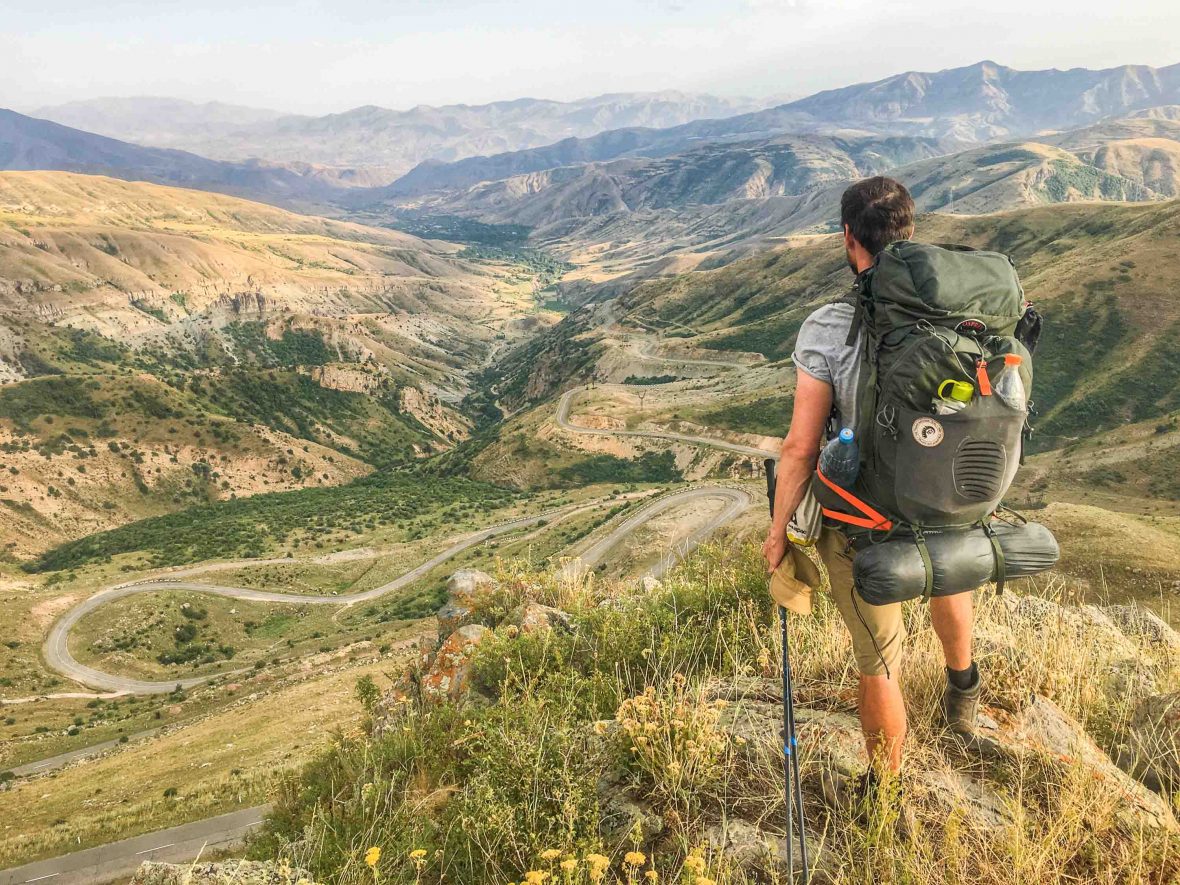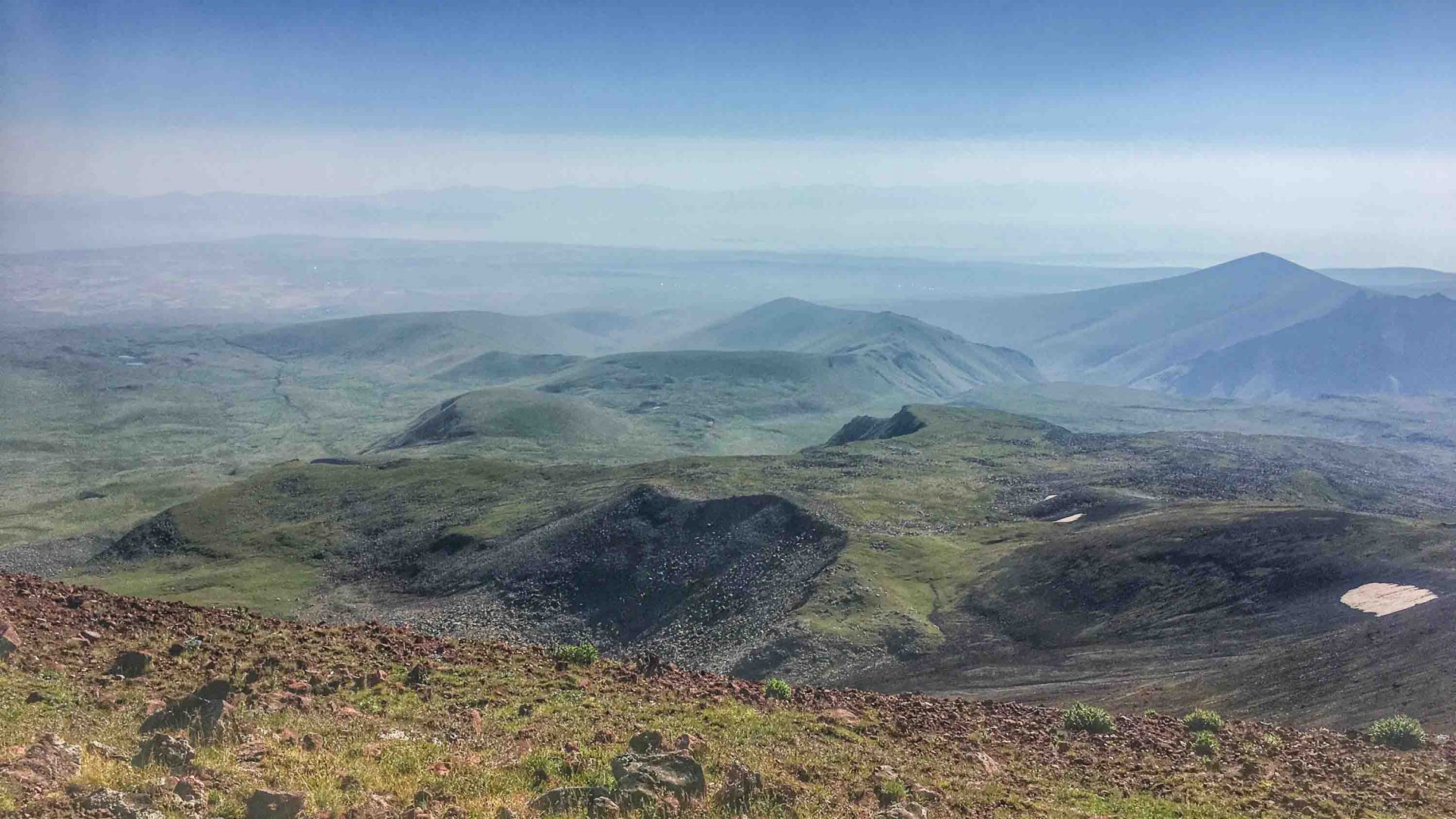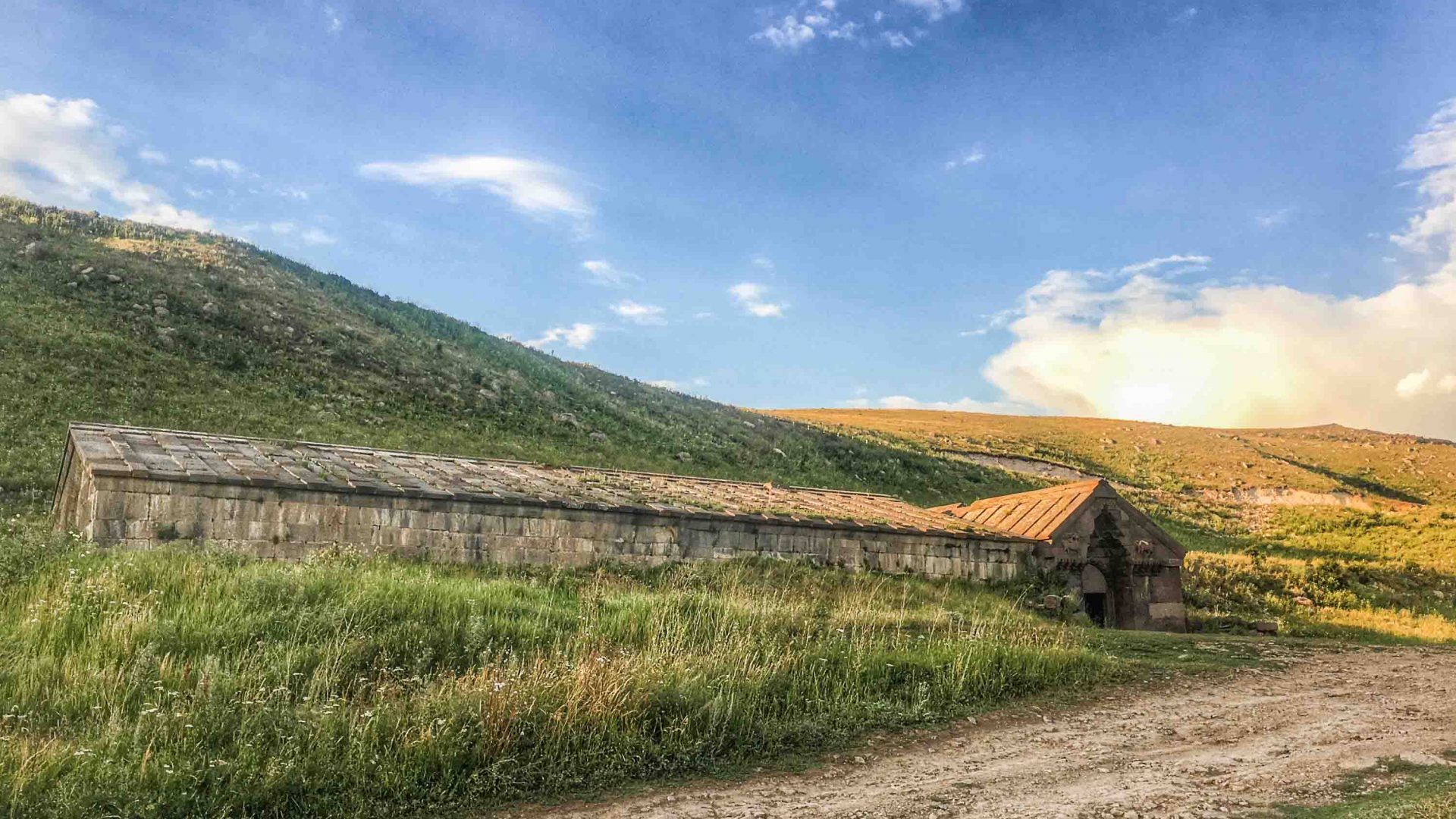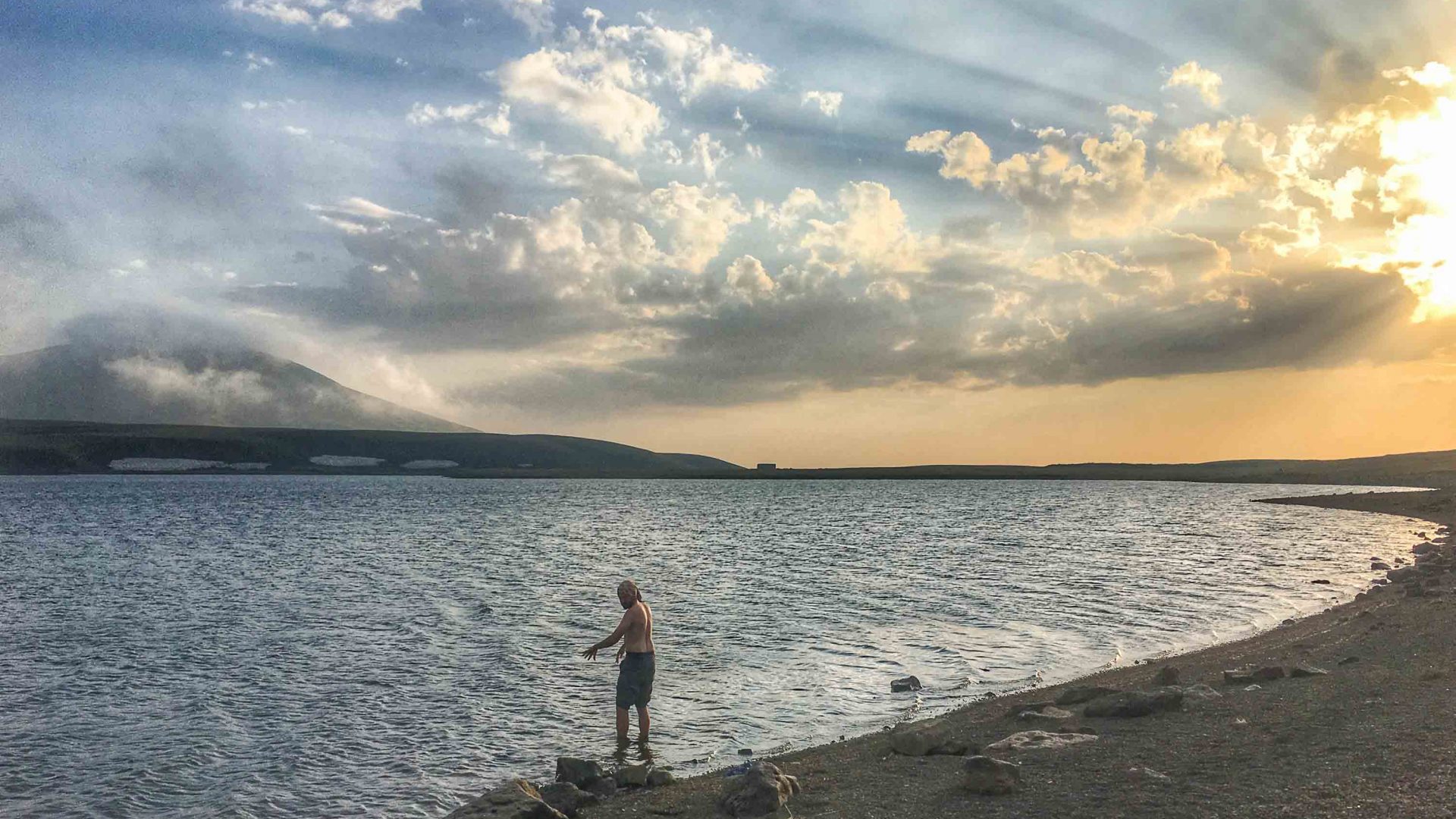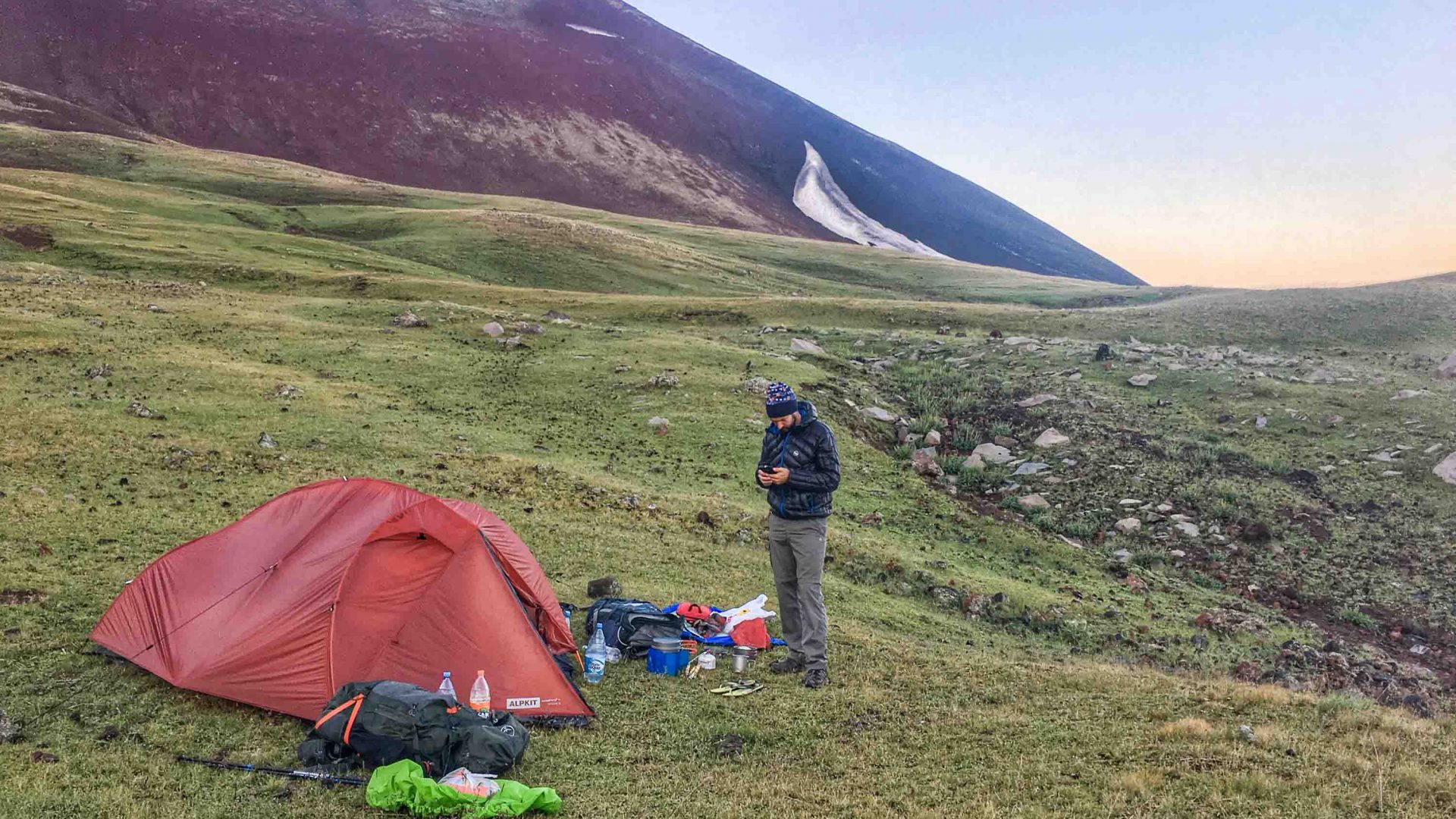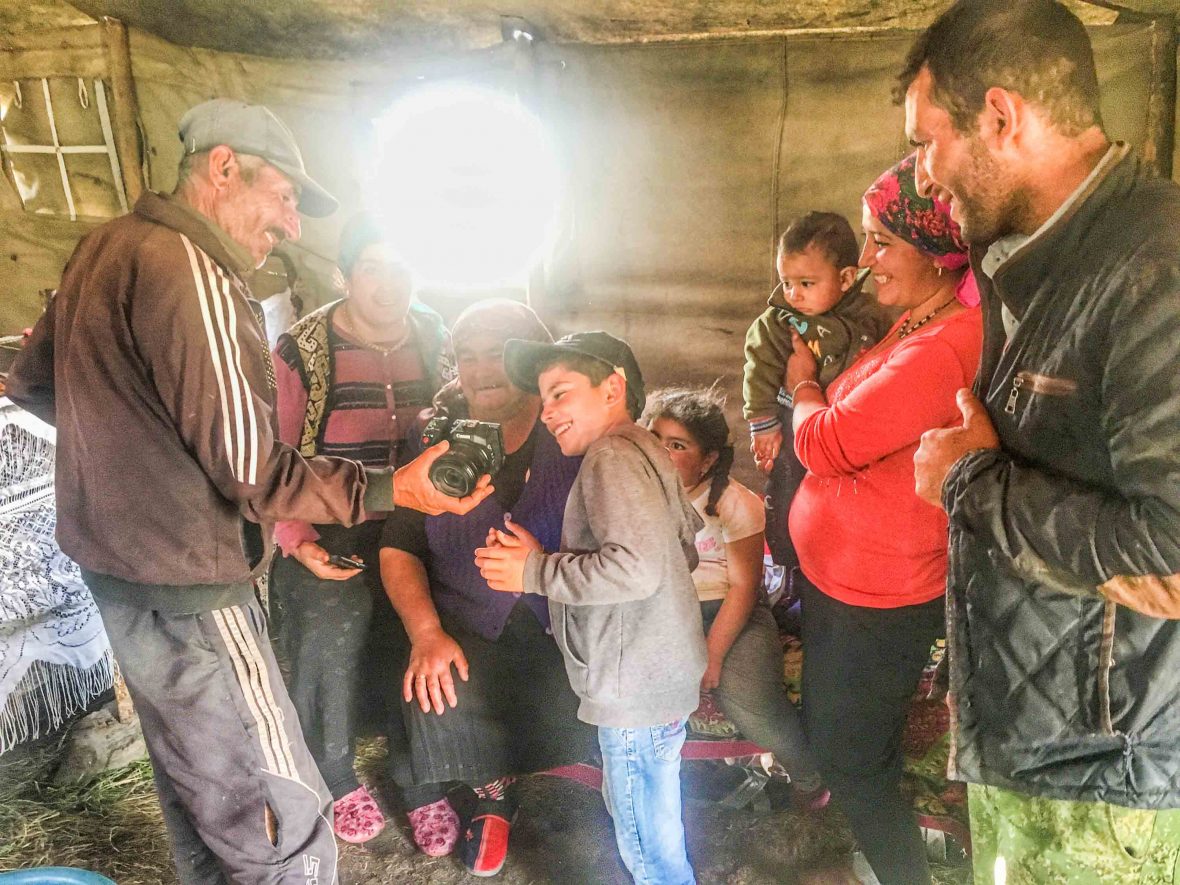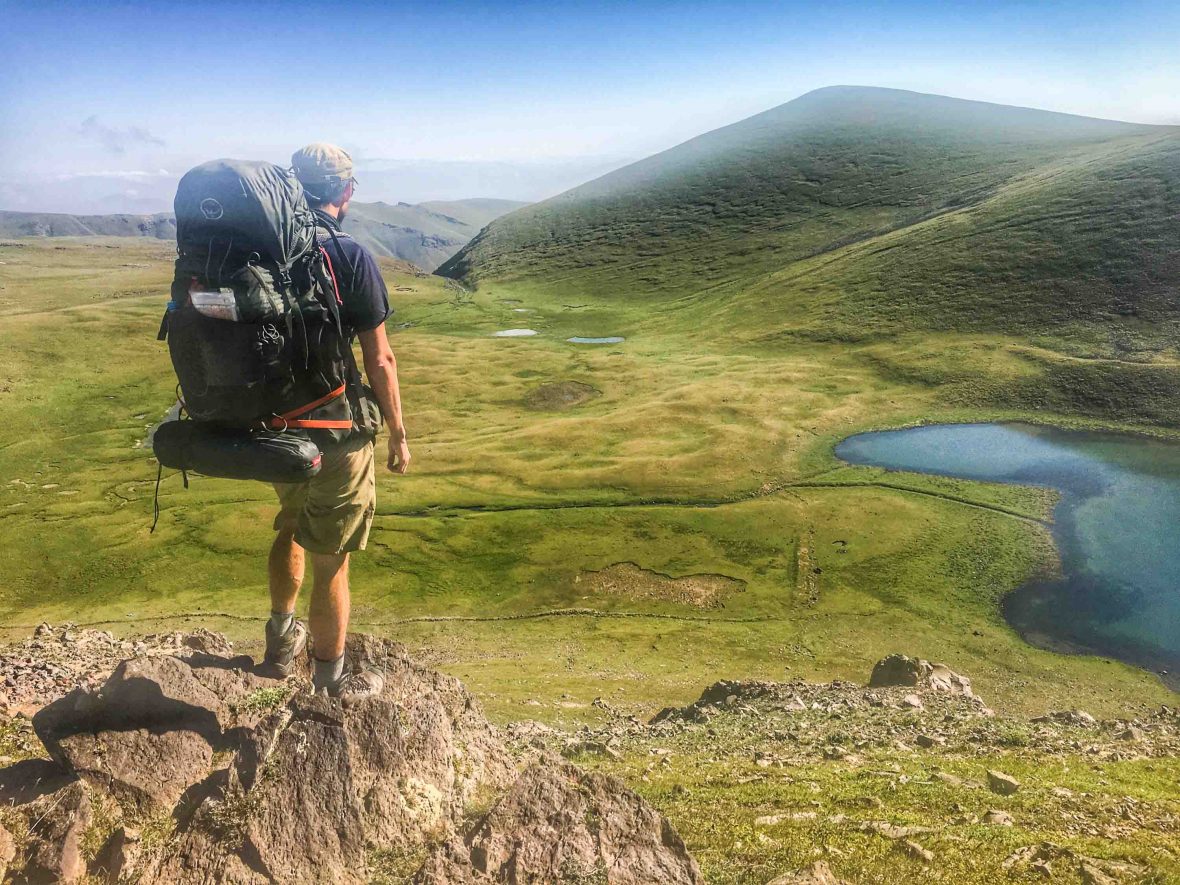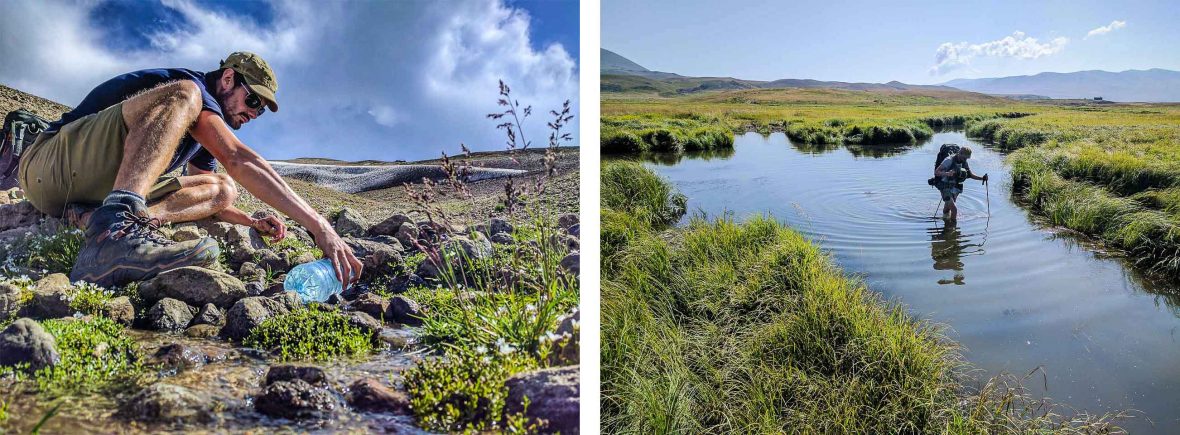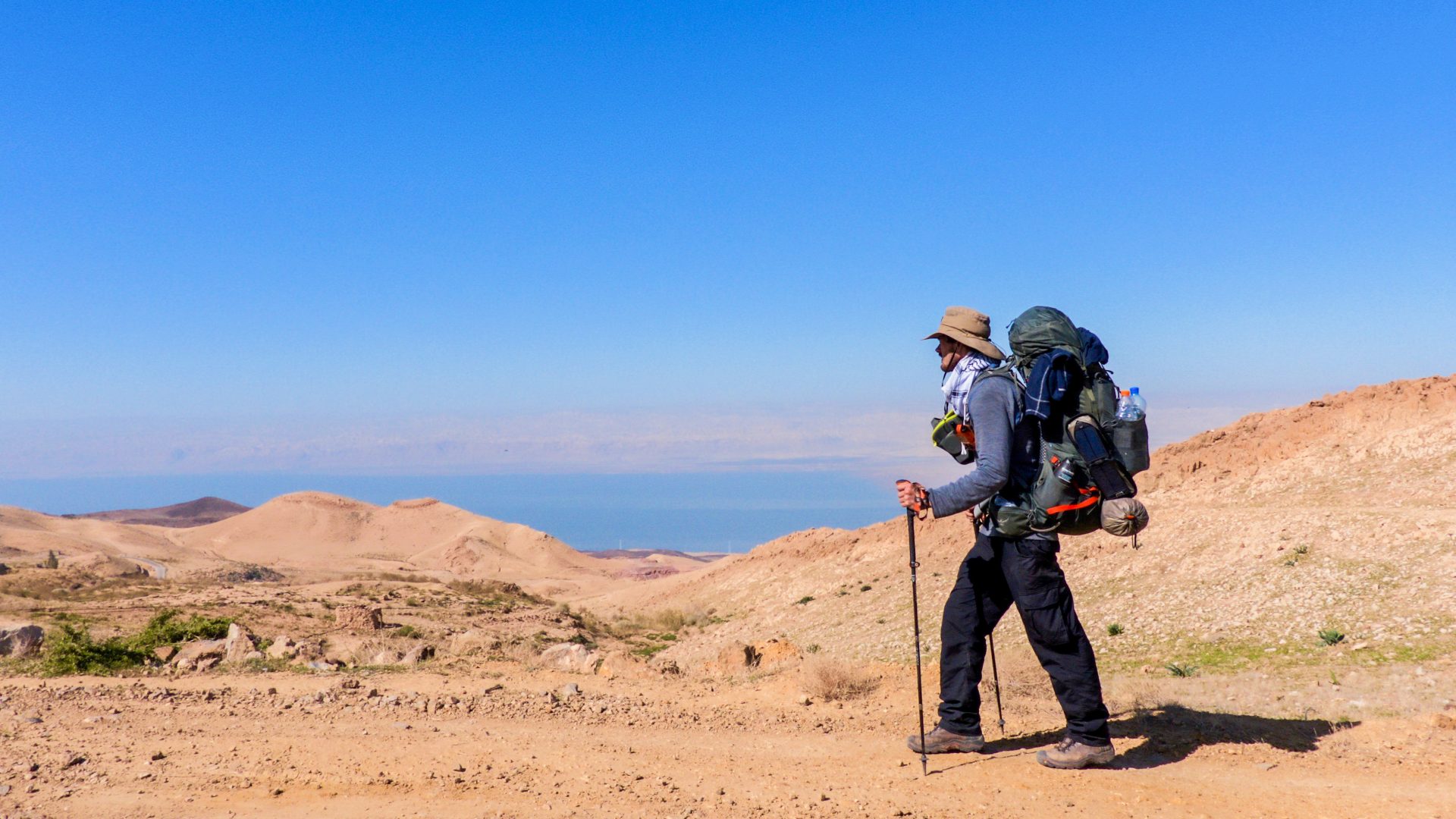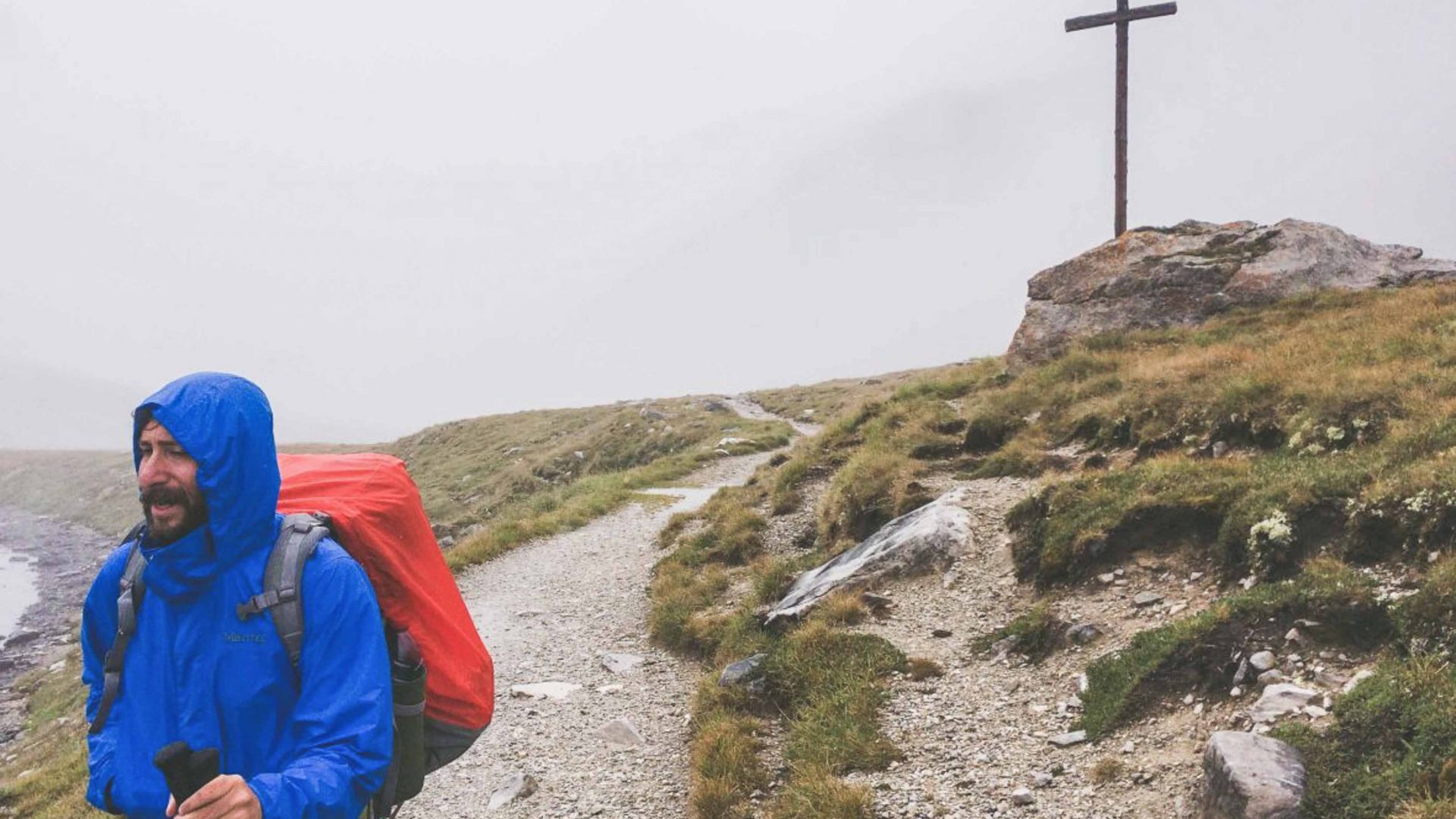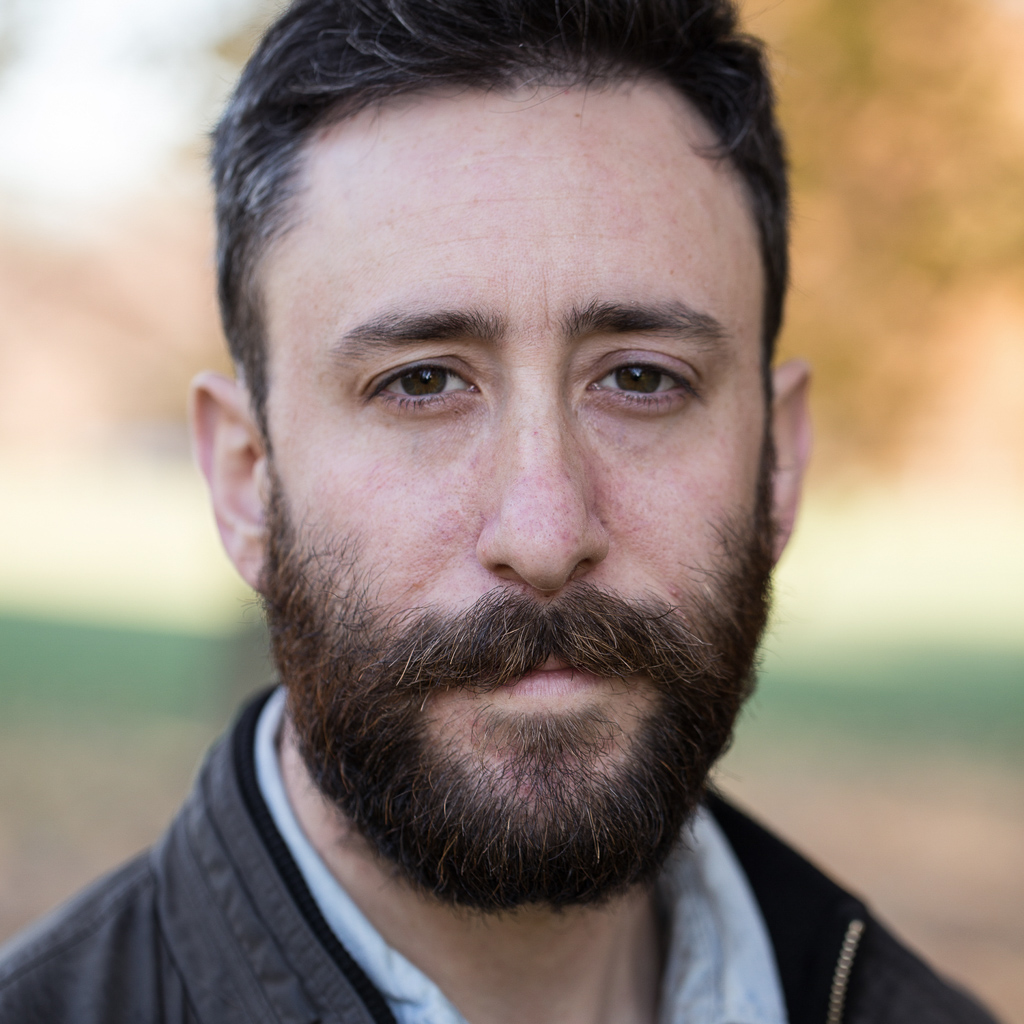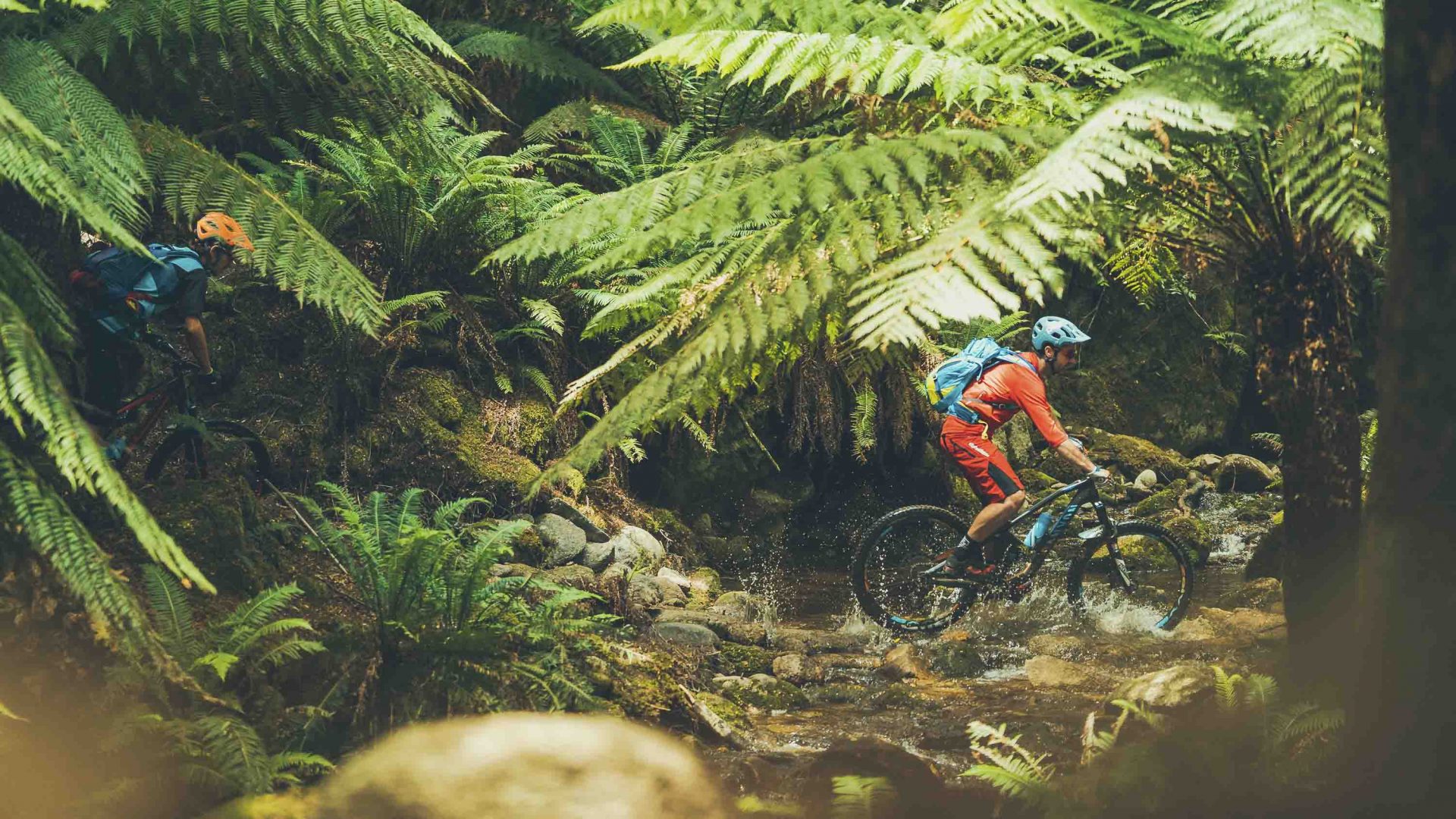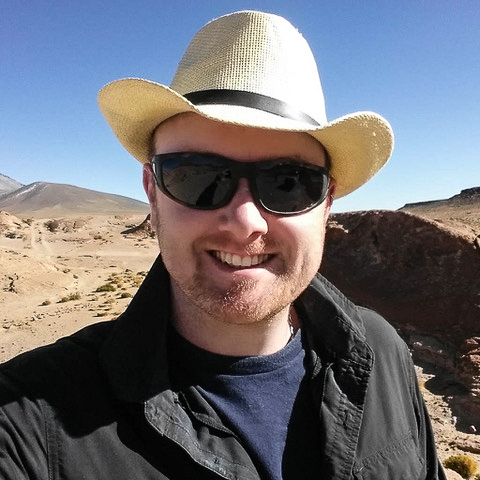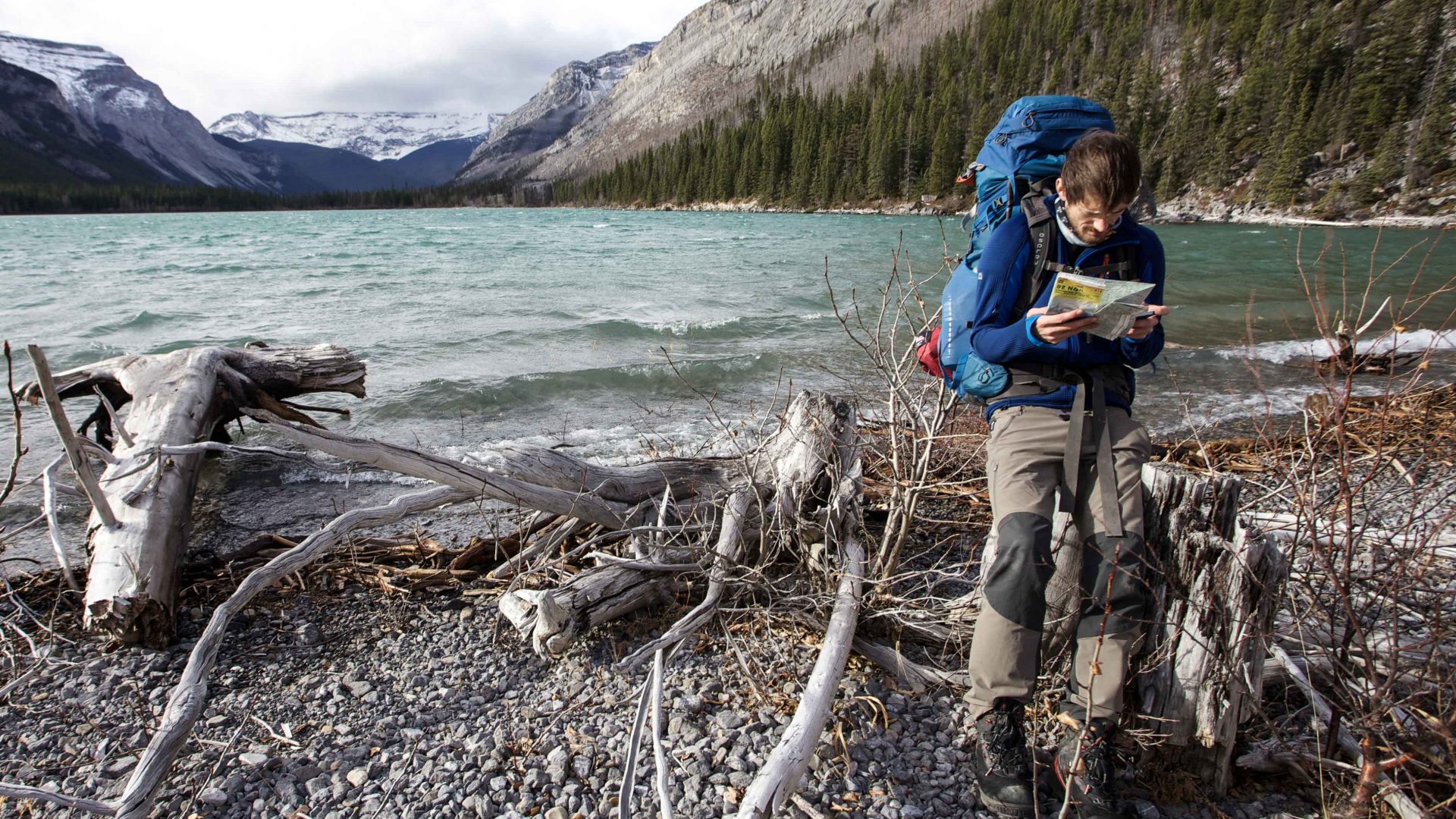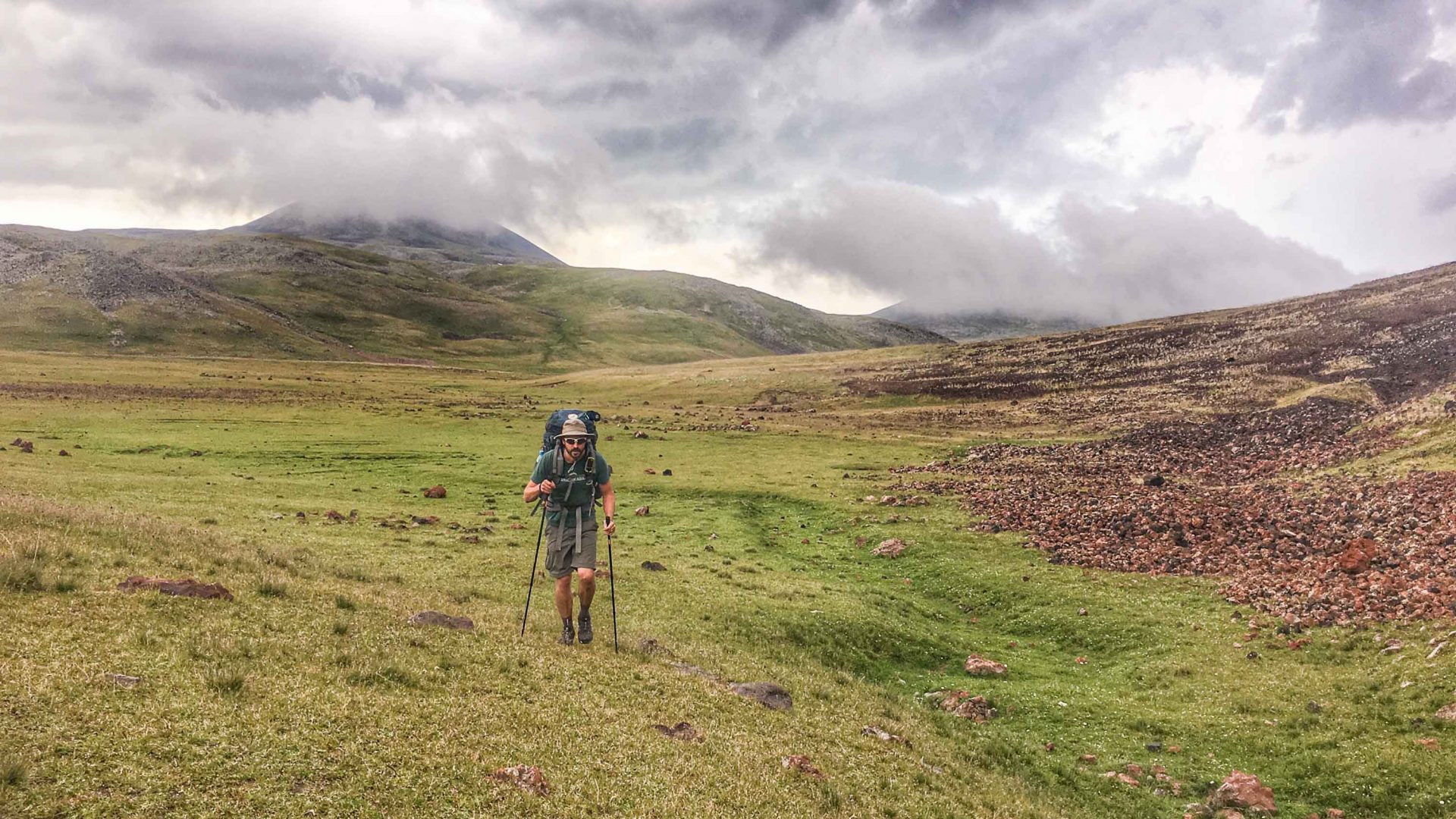
Have you ever wondered how a hiking trail came to be? Why this path and not that one? Our featured contributor Leon McCarron joins fellow adventurer Tom Allen, who’s helping to design a new hiking trail that runs the length of the Caucasus.
I had walked many thousands of miles on trails around the world before I really began to ponder the question: How does one build a hiking trail?
What are the fundamental elements? Does it, much like a book, have an author to design the arc of the experience? And what of the practicalities? What’s involved when it comes to boots on the ground?
Trails are something of a curated experience in that sense, but ones that allow ample space for adventure. In the summer of 2017, I joined my friend Tom Allen for a traverse of a remote volcanic mountain range in a country that I’d never been to, but that had been his second home for as long as I’d known him and where he was now creating a long-distance hiking trail. We’d walk and I’d listen and, hopefully, we’d make it to the other side in one piece. That was about as much of the plan as I knew.
It was perfect.

